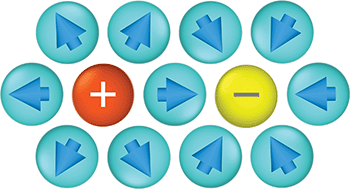Structure and dynamics of ions in dipolar solvents: a coarse-grained simulation study†
Abstract
We employ the coarse-grained molecular dynamics simulation to investigate the fundamental structural and dynamic properties of the ionic solution with and without the application of an external electric field. Our simulations, in which the solvent molecules are treated as Stockmayer fluids and the ions are modeled as spheres, can effectively account for the multi-body correlations between ion–ion, ion–dipole, and dipole–dipole interactions, which are often ignored by the mean-field theories or coarse-grained simulations based on a dielectric continuum. By focusing on the coupling between effects of ion solvation, electrostatic correlations and applied electric field, we highlight some nontrivial microscopic molecular features of the systems, such as the reorganization of the dipolar solvent, clustering of the ions, and diffusions of ions and dipolar solvent molecules. Particularly, our simulation indicates the nonmonotonic dependence of the ionic clustering and ion diffusion rates on the dipolar nature of the solvent molecules, as well as the amplification of these tendencies caused by the electric field application. This work provides insights into the fundamental understanding of physicochemical properties for ion-containing liquids and contributes to the design and development of ion-containing materials.

- This article is part of the themed collection: Soft Matter Most Popular 2021


 Please wait while we load your content...
Please wait while we load your content...